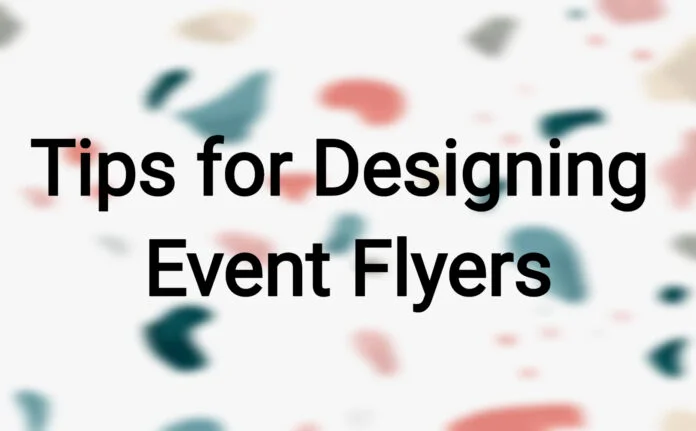Event flyers serve as powerful tools to attract attention and generate excitement for upcoming events. However, designing an effective event flyer requires careful consideration of various elements to ensure optimal engagement. In this article, we will provide you with five valuable tips for designing event flyers that will captivate your target audience. With the help of PhotoADKing and real-life event flyer examples, you can take your promotional materials to the next level.
Headings
Define Your Objective and Audience
Create a Clear Hierarchy
Engage with Visuals and Imagery
Focus on Readability and Organization
Call-to-Action and Contact Information
FAQs: Answering Common Questions
Conclusion
1. Define Your Objective and Audience
Understand Your Event’s Purpose
Before starting the design process, clearly define the objective of your event flyer. Are you promoting a music concert, a charity fundraiser, or a business conference? Understanding the purpose of your event will help you determine the tone, imagery, and overall design elements that align with your goals.
Know Your Target Audience
Consider who your target audience is and what appeals to them. Are you targeting young adults, families, or professionals? Understanding your audience’s preferences and interests will help you tailor your event flyer to resonate with them. Choose colors, fonts, and imagery that align with their tastes and create a connection.
2. Create a Clear Hierarchy
Catchy Headlines and Subheadings
Grab the reader’s attention with a catchy headline that clearly communicates the essence of your event. Keep it concise, engaging, and easy to read. Use subheadings to break down the information and guide readers through the content. This hierarchy will make your flyer visually appealing and enhance readability.
Highlight Key Information
Ensure that the essential details of your event, such as the date, time, location, and ticketing information, are prominently displayed. Use larger fonts or bold text to emphasize these crucial elements. Make sure the information is clear and easy to find at a glance.
3. Engage with Visuals and Imagery
Choose Eye-Catching Graphics
Visuals play a significant role in capturing attention and conveying the theme of your event. Utilize high-quality images, illustrations, or graphics that align with your event’s concept. For example, if you’re organizing a music concert, include images of musicians or musical instruments. PhotoADKing offers an extensive library of visuals to inspire your flyer design.
Maintain Visual Cohesion
Ensure visual harmony throughout your event flyer by using a consistent color scheme and complementary fonts. The colors should reflect the mood and theme of your event, while the fonts should be legible and aligned with your brand or event identity. Strive for a visually pleasing balance that enhances the overall aesthetic appeal.
4. Focus on Readability and Organization
Use Easy-to-Read Fonts
Select fonts that are legible and appropriate for your event flyer. Avoid overly ornate or complex fonts that may be challenging to read, especially from a distance. Consider the primary and secondary fonts that complement each other and maintain consistency throughout your design.
Organize Information Effectively
Organize the content of your event flyer in a logical and easy-to-follow manner. Use bullet points, numbered lists, or sections to break down information and improve readability. Ensure that the most critical details stand out and are easily scannable, allowing readers to grasp the key points effortlessly.
5. Call-to-Action and Contact Information
Compelling Call-to-Action
Encourage immediate action from the readers by including a clear and compelling call-to-action (CTA). Whether it’s purchasing tickets, registering for the event, or visiting a website, the CTA should be concise and attention-grabbing. Use action words and create a sense of urgency to motivate your audience to take the desired action.
Provide Contact Information
Include relevant contact information, such as a phone number, email address, or website, where potential attendees can seek further details or make inquiries. Make sure this information is easily visible and legible. Consider adding social media handles or QR codes that lead to event-specific landing pages for additional engagement opportunities.
Also Read:
Technology: Empowering Women in the World of Tech
FAQs: Answering Common Questions
Q: Can I use PhotoADKing if I’m not a professional designer?
A: Absolutely! PhotoADKing offers user-friendly design tools and a wide range of customizable templates suitable for beginners and non-designers. You can create stunning event flyers even without prior design experience.
Q: How can I ensure my event flyer appeals to primary school students?
A: To make your event flyer understandable to primary school students, use simple language, vibrant visuals, and age-appropriate themes. Consider incorporating elements that resonate with their interests and make the content easily digestible for young readers.
Q: How can I measure the success of my event flyer?
A: Track the performance of your event flyer by monitoring metrics such as the number of registrations, ticket sales, or website visits. Additionally, gather feedback from attendees to gauge their responses and make improvements for future events.
Conclusion
Designing an impactful event flyer requires careful consideration of your event’s purpose, target audience, visual elements, readability, and effective calls to action. By following the top five tips outlined in this article and utilizing tools like PhotoADKing, you can create eye-catching event flyers that engage your audience and drive attendance. Remember to keep your design cohesive, information clear, and visuals captivating. So, start designing and watch your event flyer leave a lasting impression on potential attendees.

